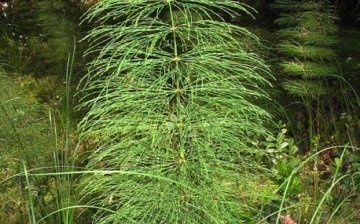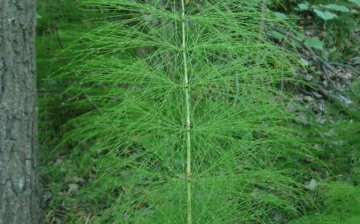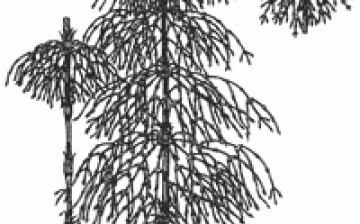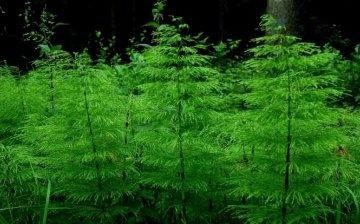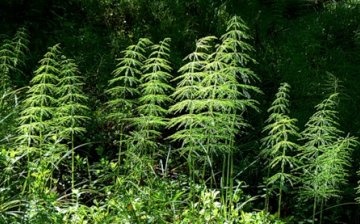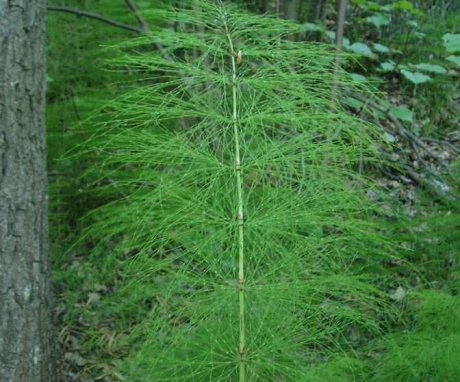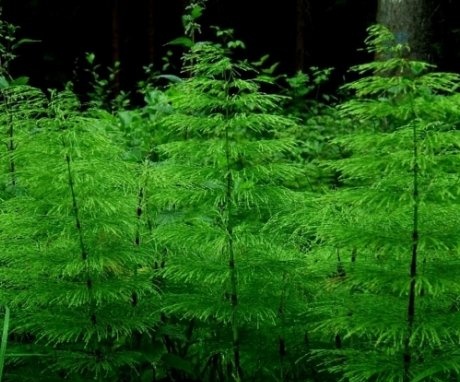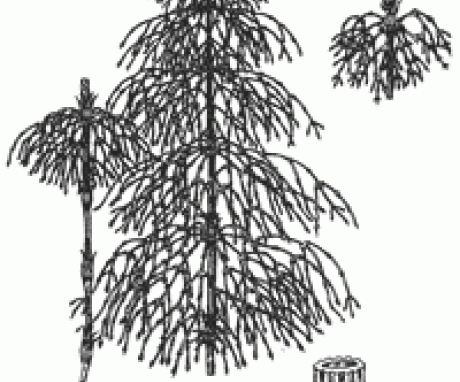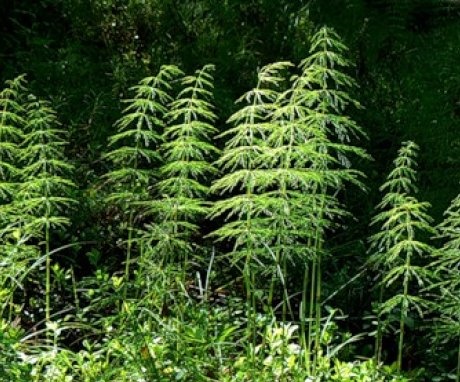Horsetail: description, habitat, reproduction and features
Horsetail cannot be confused with anything - it clearly differs in its appearance from other plants. As a rule, its branches look like a "herringbone". Horsetails have many interesting features, and these relics of the ancient terrestrial flora that have survived to our time are waiting for their researchers. Horsetail, perhaps, was met by everyone who got out into the forest from the urban jungle.
Content:
- Description of horsetail as a species
- Horsetail habitat
- External features of horsetail and its reproduction
- Characteristics of the forest horsetail
Description of horsetail as a species
The "horsetail" came from the Old Church Slavonic, which means "tail". The basis of horsetails is silica, this makes them strong and biting, like a ponytail. It is not without interest that in Latin the name of their genus - Equisetum - is derived from a phrase that means "horse mane".
From ancient times, man used the rigidity and strength of horsetails to grind bones, wood, and even metal. This is not surprising, since it is from silica that a substance such as quartz is composed.
Rodents, hares and many other herbivores feed on horsetail shoots. However, they are common food for predators as well. So, bears eat them with pleasure, and boars willingly eat horsetail stems and tubers.
True, according to some reports, horsetails should be avoided by livestock, especially horses. However, this information is confused and contradictory, there is no serious scientific research on this topic.
Horsetails - yes perennial plantsgrowing in height up to 50 cm:
- Their rhizome is short and black-brown in color.
- Spring shoots are spore-bearing, simple, have reddish-brown whorls; after sporulation, they are similar to vegetative ones (practically indistinguishable).
- The usual sizes of vegetative shoots: height - 15-40 cm, diameter - 1.5-4 mm.
- The lateral shoots of horsetail are always branched and divided into stems.
- The branches vary greatly in number, density, length, and direction of growth.
- As for the epidermis of the stems, they are all with small thorns.
- On the stem, the leaves form whorls, from 6 to 12, and almost always grow together in 2-3 pieces, going directly to the top in 3-6 lobes.
- On the branches of horsetails, leaf teeth are present in 3-4 pieces in each whorl.
- Horsetail spikelets are cylindrical in shape, and their length ranges from 20 to 30 mm, although on some specimens it can be up to 40.
- As you can see, horsetails are familiar to us plants and their distinctive features are well known to all of us.
Horsetail habitat
Horsetail unpretentious plants and are found in the forest, bushes, tundra, on the banks of a reservoir and a swamp.
The territory of their distribution is huge.
They are commonly found in the following regions:
- Europe: Scandinavia, Central and Eastern Europe, Western and Eastern Siberia, the Caucasus;
- Asia: Japan-China region, Central Asia, Far East of Russia, Mongolia;
- North America: Canada, USA.
In total, there are about 30 different types of horsetails on our planet.
From the above, it will be correct to conclude that the horsetail is ubiquitous and it is easier to say where it does not exist than to list all the territories of its distribution.
External features of horsetail and its reproduction
Horsetails are perennial rhizome and herbaceous... They are characterized by shoots that consist of well-defined parts - internodes, as well as the so-called whorls, i.e.nodes with leaves that are whorled.
Features of horsetails:
- Horsetail leaves are small and scaly-shaped. Photosynthesis is provided by green stems and branches of horsetails.
- They reproduce both by spores and rhizomes (for the most part).
Horsetail spore-bearing shoots are of 2 types:
- Pink-brown, which do not branch, appear in early spring and die off after sporulation, and
- Green, which is not much different from vegetative.
Horsetail spores have hygroscopic ribbons, in biology they are called elaters.
These ribbons loosen and concentrate the spore mass. It turns out a kind of lumps that the wind carries over long distances. In general, we can say that both appearance and horsetail breeding method do not boggle the imagination.
Characteristics of the forest horsetail
Equisetum sylvaticum L., as biologists call it, or forest horsetail, is one of the common and common types of horsetails in our country.
- Appearance: is a simple spring shoots, they are spore-bearing, bell-shaped whorls and brown in color. After sporulation, and maturation in horsetails lasts from April to June, these shoots develop into green branches. The height of the horsetail is from 20 to 60 cm, the root is long and thin, brown-black in color.
- Lifespan: it is a perennial plant
- Habitat: Horsetail grows mainly in moist forests, mainly spruce or birch.
- Its distinctive feature is dominance against the background of mosses. Arrays of horsetails fill gentle, but without steepness, slopes to forest reservoirs, wet meadows, and in the northern part of the forest zone, they can also be present as a weed on arable land that has just been plowed out from under the forest.
- Distribution: Horsetail is a common and widespread plant that is characteristic of the entire forest and arctic part of the northern hemisphere.
- Characteristic qualities: like almost all horsetails, it reproduces well and spreads vegetatively. Horsetail "produces" a spore mass in large quantities, it easily takes root wherever there are suitable conditions for it, especially in the north.



